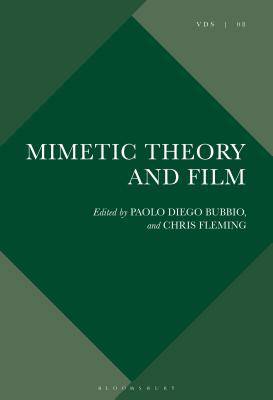
- Afhalen na 1 uur in een winkel met voorraad
- Gratis thuislevering in België vanaf € 30
- Ruim aanbod met 7 miljoen producten
- Afhalen na 1 uur in een winkel met voorraad
- Gratis thuislevering in België vanaf € 30
- Ruim aanbod met 7 miljoen producten
Zoeken
Mimetic Theory and Film
€ 254,45
+ 508 punten
Omschrijving
The interdisciplinary French-American thinker René Girard (1923-2015) has been one of the towering figures of the humanities in the last half-century. The title of René Girard's first book offered his own thesis in summary form: romantic lie and novelistic truth [mensonge romantique et vérité romanesque]. And yet, for a thinker whose career began by an engagement with literature, it came as a shock to some that, in La Conversion de l'art, Girard asserted that the novel may be an "outmoded+? form for revealing humans to themselves. However, Girard never specified what, if anything, might take the place of the novel. This collection of essays is one attempt at answering this question, by offering a series of analyses of films that aims to test mimetic theory in an area in which relatively little has so far been offered. Does it make any sense to talk of vérité filmique?
In addition, Mimetic Theory and Film is a response to the widespread objection that there is no viable "Girardian aesthetics.+? One of the main questions that this collection considers is: can we develop a genre-specific mimetic analysis (of film), and are we able to develop anything approaching a "Girardian aesthetic+ Each of the contributors addresses these questions through the analysis of a film.
In addition, Mimetic Theory and Film is a response to the widespread objection that there is no viable "Girardian aesthetics.+? One of the main questions that this collection considers is: can we develop a genre-specific mimetic analysis (of film), and are we able to develop anything approaching a "Girardian aesthetic+ Each of the contributors addresses these questions through the analysis of a film.
Specificaties
Betrokkenen
- Uitgeverij:
Inhoud
- Aantal bladzijden:
- 224
- Taal:
- Engels
- Reeks:
- Reeksnummer:
- nr. 8
Eigenschappen
- Productcode (EAN):
- 9781501334832
- Verschijningsdatum:
- 21/02/2019
- Uitvoering:
- Hardcover
- Formaat:
- Genaaid
- Afmetingen:
- 157 mm x 231 mm
- Gewicht:
- 453 g

Alleen bij Standaard Boekhandel
+ 508 punten op je klantenkaart van Standaard Boekhandel
Beoordelingen
We publiceren alleen reviews die voldoen aan de voorwaarden voor reviews. Bekijk onze voorwaarden voor reviews.







